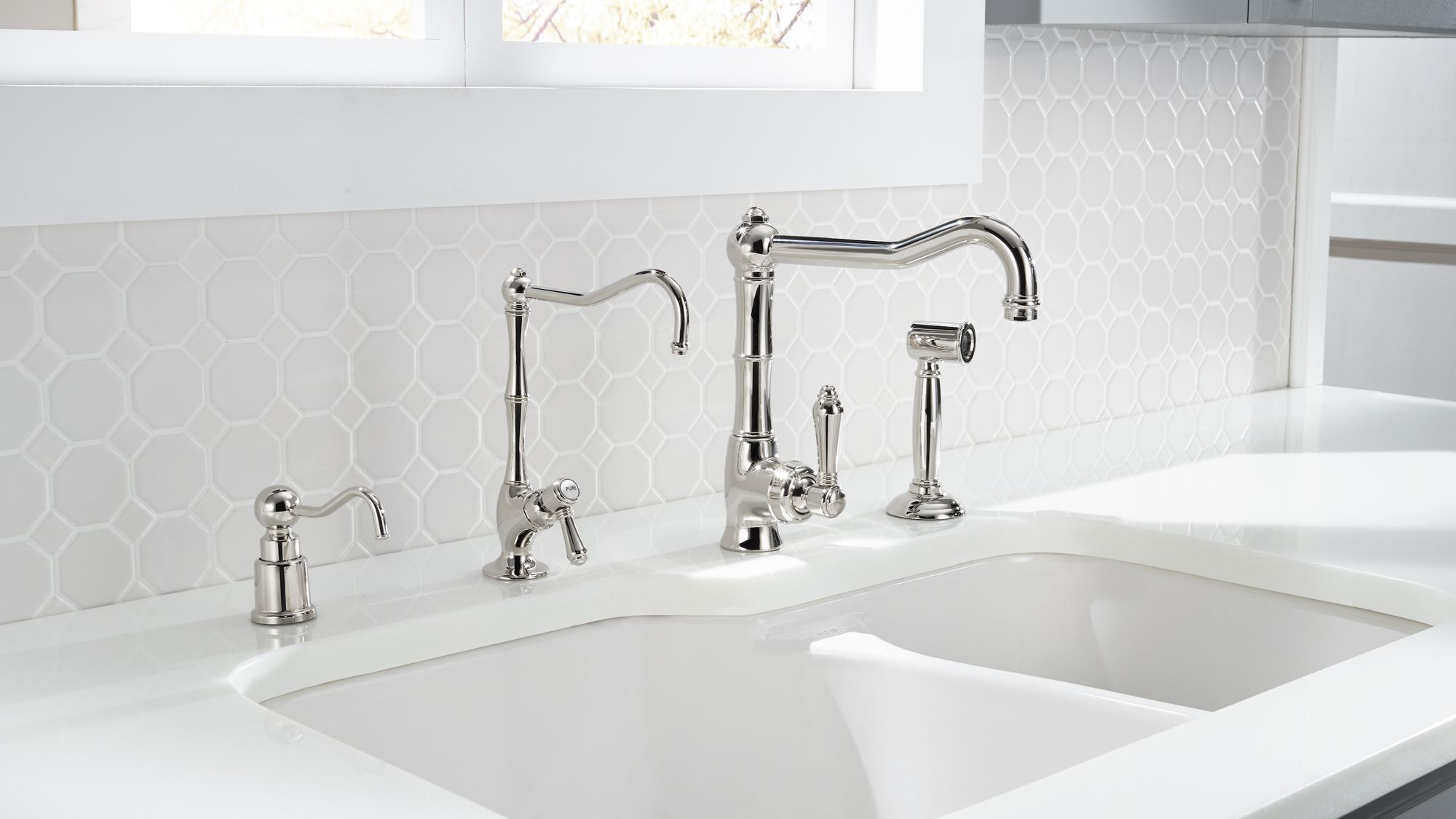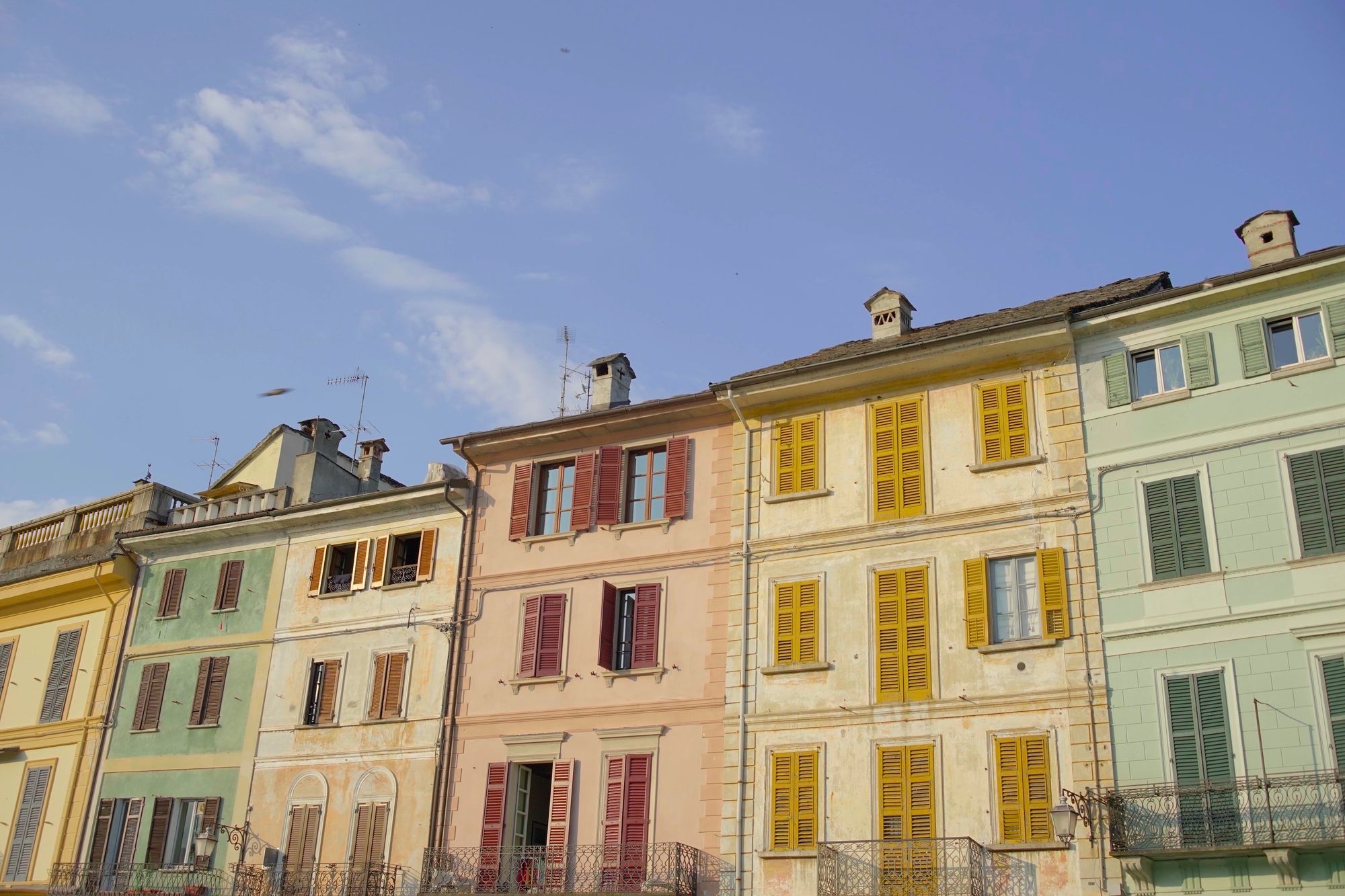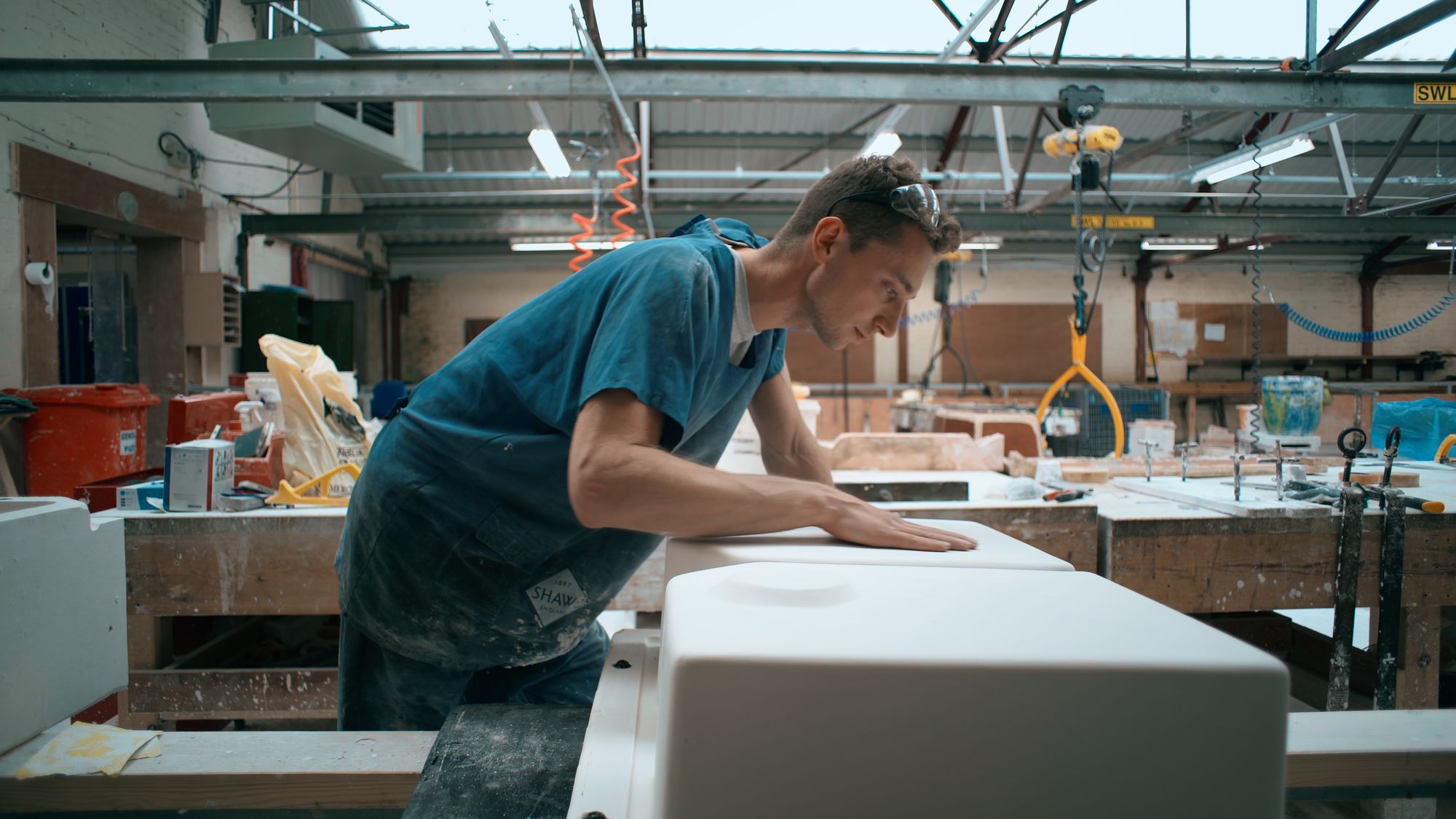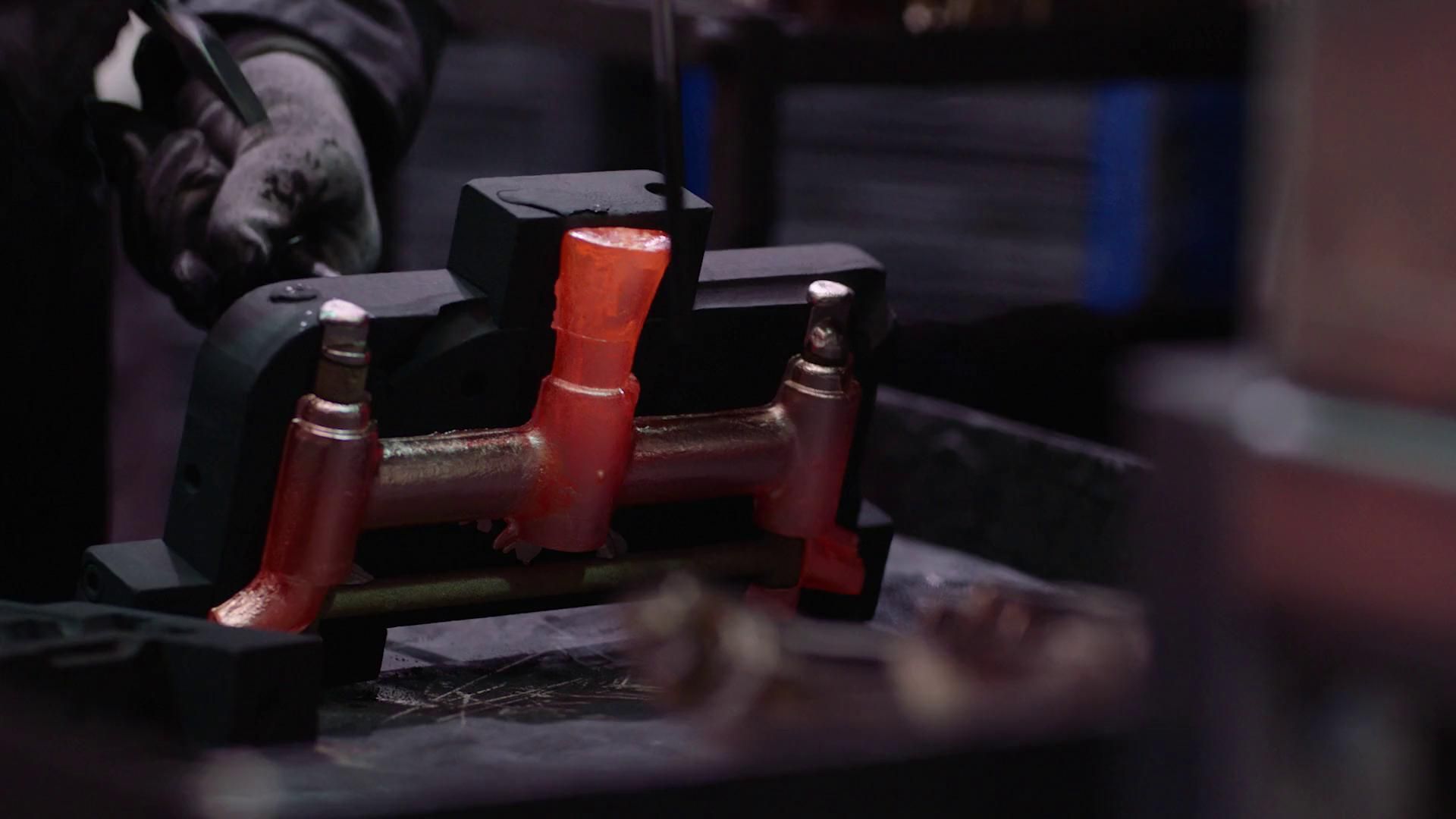In 1768, a chemist’s wife in St. Yrieixin, a commune just outside of Limoges in southwest-central France, made a thrilling discovery: A soft white substance in the soil. At first, the story goes, the woman thought the substance could be used to wash and bleach linen, but it turned out she had stumbled upon “white gold.” The substance was kaolin, a rare and precious white clay that is a key ingredient in crafting fine porcelain. That discovery set Limoges on a path towards becoming a center for some of the most beautiful and coveted porcelain in the world.
Today, Limoges is classified as a UNESCO Creative City and the ceramics industry continues to thrive. It’s a region where history and tradition inform modern design. From decorative boxes to exquisite dinnerware to elegant kitchen sinks, Limoges porcelain remains a world-class standard for craftsmanship.
White Gold
The history of porcelain in Europe starts with Marco Polo. In the 14th century, the explorer brought a small jar from China back to Europe with him and Chinese porcelain became a favorite among royalty. During the sixteenth century, the Portuguese and Dutch established commercial trade routes to China and the European market for porcelain grew fast. China kept porcelain’s ingredients and production process a closely guarded secret, inspiring scientists across Europe to experiment with materials and formulas. The first European porcelain factory was established in Saxony in 1710 after kaolin was discovered nearby.
The first porcelain with the Limoges mark was produced in 1771. Limoges had all the essential natural ingredients needed to create world-class porcelain—kaolin, feldspar and quartz—but, just as importantly, the region had a vibrant history of craftsmanship that dated back nearly a millennium. In the 12th century, Limoges was the most famous European center of vitreous enamel production, known as Opus de Limogia or Labor Limogiae. Limoges also produced faience earthenware, or fine in-glazed pottery. The heritage of ceramics and decoration was deeply woven into the fabric of the city.
Making porcelain is a difficult, delicate, and time-intensive process that involves vitrifying the clay multiple times at extremely high temperatures. Limoges porcelain is known for its dazzling white, luminous hue and the intricacy of its hand-painted decorations. At first, its manufacture was placed under the protection of the Comte d’Artois, Louis XVI’s brother, and then purchased by the King himself. It became the Manufacture Royale de Limoges, with the exclusive right to produce Limoges porcelain for the Kingdom of France. In Louis XVI’s time, the manufacture primarily produced trinket boxes of varying shapes and sizes depending on what they were meant to hold, from embroidery scissors to snuff powder to poems. Popular design styles included Rococo-style figures; exotic birds, flowers, and marine subjects on bright color backgrounds; minute patterns embellished in gold; and narrative scenes from classical mythology and pastoral life.
After the French Revolution, the restrictions on porcelain production lifted and the commercial trade flourished. In 1819, the region had four porcelain factories; by 1900, there were 35 factories and 120 kilns employing up to 8,000 workers. Limoges became the undisputed French capital of porcelain production, as well as a major exporter of porcelain to the U.S.
 ROHL Allia Sink Collections are crafted from the special heavy ball clay found in the region.
ROHL Allia Sink Collections are crafted from the special heavy ball clay found in the region.
Limoges today
Centuries later, Limoges porcelain continues to signal luxury and refinement. Limoges objects and dinnerware collections are commissioned by presidents and royalty and passed down through generations in families, but the industry continues to push creative boundaries that maintain porcelain’s relevance.
ROHL®, the luxury kitchen and bath fixtures brand, for instance, works with Limoges clay to create the Allia™ Sink Collection, fireclay sinks that have an extra thick luminous glaze to create beautiful stain and chip resistant surface. “Limoges has such a rich history of craftsmanship and it’s been such a unique and rewarding experience to work with these artisans who have perfected their work over the years,” says Lou Rohl, chairman and founder of House of ROHL.
The storied porcelain house Bernardaud has produced cutting edge dinnerware collections with artists like Joan Miro, Marina Abramovic, Alexander Calder, Kara Walker, Julian Schnabel, and David Lynch. The house has also expanded into high-end costume jewelry and collaborated with prominent artists to make objects, such as Roy Lichtenstein’s Landscape Mobile and Jeff Koons’ balloon animals. These collaborations have given Limoges a place in the canon of modern art.
Limoges is also home to a younger generation of exciting artistic collectives like Passage Secret and Esprit Porcelaine. These workshops are using porcelain to create contemporary sculptures, fanciful lamps, and decorative household objects, like sugar bowls and goblets. They are also experimenting technically by combining porcelain with unconventional materials, like iron and sandstone.
“It was a strong emulation between our creative and technical skills that made us want to form this duo,” said the founders of Passage Secret, Yaël Malignac and Guillaume Descoings. “We want the unusual, the unexpected, poetry and beauty. We want to create contrast to highlight the porcelain, its whiteness, its fragility, its translucency.“
Limoges porcelain has always married the beautiful with the functional. Some applications of porcelain draw on the material’s unique properties of strength, durability, and imperviousness to create products that enhance everyday life. Thanks to its unique geologic and design history, Limoges is a global center that showcases all the possibilities of what porcelain can be.





